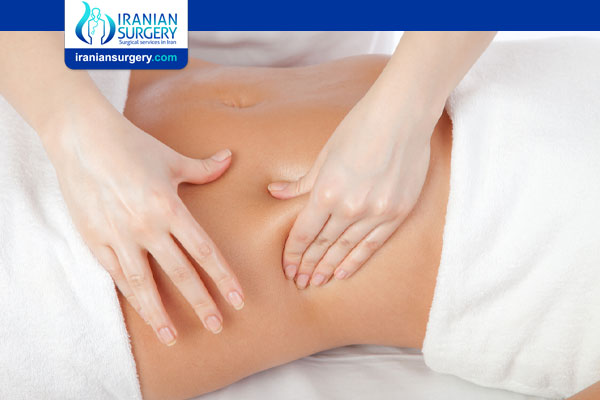Fibrosis after liposuction

Fibrosis After Liposuction
One of the most common secondary effects of surgery is fibrosis. Many people notice it some weeks after the surgery or during the post-op. At first, you may feel some lumps on the scar tissue, then you will notice that they get thick and hard, and you may feel pain in the area. To avoid fibrosis development, it’s very important to start your post-op manual lymphatic drainage (MLD) as soon as possible, to wear your garment 24/7 and to have the right compression to prevent the accumulation of fluid in order to heal properly and faster.
What Is Fibrosis?
After any type of surgery, the skin can build up adhesions and scars as part of the healing process. However, the body can abnormally increase the production Fibroblast (a main connective tissue cell present in the body) in the form of bands which connect two or more tissues causing hardness under the skin.
Your wound heals in stages. The healing process starts the instant your surgeon makes the incision. The acute stages of coagulation and inflammation can take minutes or days, whereas the proliferative and remodeling stages can take days, weeks or even more. Although various cell types are involved in fibrosis, it’s the fibroblast, the main character when we talk about wound remodeling and collagen deposition. Fibroblast plays an important role in creating and remodeling this extracellular tissue and in some cases, this excess fibrous tissue can be painful or disturb your body functions.
In other words, fibrosis is a set of imperfections that you can observe after liposuction and are described as painful hard lumps under your skin where liposuction has been done. It can also appear as large pores, tissue discoloration and uneven areas.
What Are the Risk Factors of Fibrosis?
Some risk factors are:
. The size of your scar. When the scar is big there are more possibilities to develop fibrous tissue.
. Genetics. There are people who are prone to develop fibrosis even when having small cuts, they can develop big scars (keloids).
. Lack of movement. Sitting for long period increases the risk of fibrosis. Remember you need to move every hour for 5 minutes after your surgery and increase exercise as soon you start feeling better.
. Un appropriated garment and compression
There is no way to say who can develop fibrosis, but if you developed it don’t worry, fibrosis can be treated at early stage with manual lymphatic drainage or if is more chronic a combination of Lymphatic drainage, ultrasound, and fascia stretches can help to soften the tissue and restore the affected area. Fibrosis needs to be treated as soon as you notice the hard lumps under the skin, the longer you wait to see a professional the more difficult to treated.
What Are the Symptoms of Fibrosis?
Fibrosis post-op is characterized by:
. Feeling of a radiating pain, in some cases it could be constant or get worse in some postures.
. Thick and hard skin added to your scar tissue
. Uneven skin
. Local pain around the incision
. Numbness or loss of light touch sensation
. Pulling sensation on the area as you try to move or stretch
How Is Fibrosis Diagnosed?
The best way to diagnose fibrosis is through palpation of the area treated therefore, check the tissue daily. Talk to your surgeon if you think you have developed fibrosis. When fibrosis is presented in organs or unreachable places you will need a magnetic resonance.
What Is the Best Treatment for Fibrosis?
Once you have developed fibrosis you need combination of treatments to achieve better results such as: Manual Lymphatic Drainage, ultrasound therapy, myofascial and prescribed stretches. Lymphatic Drainage, unlike some other forms of massage, it uses very light pressure, combined with soft pumping movements to drain the excess of fluid from the affected area towards the lymph nodes. After surgery your lymphatic system becomes suppressed. Therefore, the lymphatic system is not filtering properly, causing you pain and fluid retention.
Manual Lymphatic drainage also allows fresh nutrients such as oxygen, vitamins and minerals to nourish your cells, at the same time, it reduces swelling, bruising, and fibrosis; it helps in the scarring process and alleviates pain.
Daily drainage is important to relieve pain and drain excess of fluid and speed up recovery. Our fibrosis treatment is designed to help you recover fast and help reduce scar tissue and uneven skin. The treatment is tailored based on your needs. If you feel some stomach discomfort you can buy omeprazole, it is a type of medicine called a proton pump inhibitor. Proton pumps are tiny substances in the lining of the stomach that help it make acid to digest food. Omeprazole prevents proton pumps working properly. This reduces the amount of acid the stomach makes.
About Iranian Surgery
Iranian surgery is an online medical tourism platform where you can find the best Plastic surgeons in Iran. The price of Liposuction in Iran can vary according to each individual’s case and will be determined by an in-person assessment with the doctor.
For more information about the cost of Liposuction in Iran and to schedule an appointment in advance, you can contact Iranian Surgery consultants via WhatsApp number 0098 901 929 0946. This service is completely free.
Source:
https://pereaclinic.com/hard-lumps-after-liposuction-how-to-reduce-fibrosis-after-surgery/

